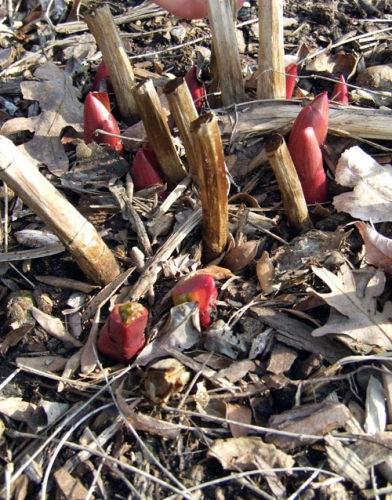What’s “growin’ on” with this weird weather?
Weird winter weather pushes spring displays earlier than normal.
For the better part of winter, gardeners have been noticing that their early blooming bulbs are pushing up, buds on clematis and maple are swelling, and the feeling of spring is in the air. With many species responding to the warm winter by awaking early, one can only wonder whether or not Ol’ Man Winter will play a cruel trick on us by showing up late in March. The question will be, “How will the plants respond to significant temperature dips if they are yet in our forecast?” The answer probably lies not in my crystal ball, but in the genetics of the plant.
Chillin’ out
Bulbs that are popping up now are responding to warm temperatures because they have had their “chilling” requirement met. Whether you have had them in for several seasons or planted them last fall, the bulb is just waiting for the right amount of water and warmth to unfold and burst above the soil crust. My observation is that most of the bulbs showing green leaves now tend to be early performers by nature. Crocus, Daffodil, Allium and early tulips are all quite hardy, having leaves that can sustain moderately freezing temperatures and even snow. The later-blooming bulbs may be showing some green leaves, but are taking their sweet time to push out of the ground.
|
Other early perennials such as peony, bleeding heart, and vines like clematis may have a tough time if the green tissue unfolds with leaves well-formed and quite visible. Any soft tissue that is showing will burn back if we have a hard freeze on most perennials, so keeping a drop cloth, tarp or lots of sheets on hand may help you avoid the ugly black foliage that will ensue if temperatures below 32 degrees occur. For larger shrubs and trees, this is more difficult, so we may have to bear some unsightly, black or tattered foliage for the beginning of spring. Rest assured, as the plants unfold throughout the season, most of the ugly stuff will be covered up. Conifers are an exception.
This bud’s for you
The bigger concern I have at this point is swelling buds on perennials such as peony or Hosta and bulbs like Hyacinth and tulip. These fat buds are far more vulnerable to the pitter patter of doggie feet or an overzealous gardener! That nice, new rake you got during the holidays can mess up a plant pretty quick. Also, once the buds are crushed by a heavy foot, the foliage that follows will appear crinkled, torn and unattractive. Simply caging off your plants to protect them from being damaged will allow you to enjoy the perennials in an un-mashed form for the rest of summer. If you have boughs left over from holiday decorations, simply nestling them over top of the plants will help discourage traffic and protect buds for a glorious spring display!
Find out about other educational resources and classes at www.migarden.msu.edu and at Finneran’s blog. You can contact the MSU Master Gardener Lawn and Garden Hotline at 888-678-3464 with your questions.



 Print
Print Email
Email



